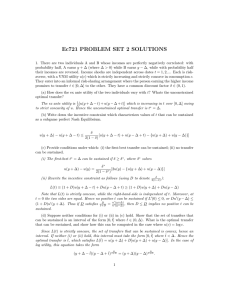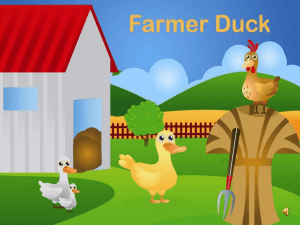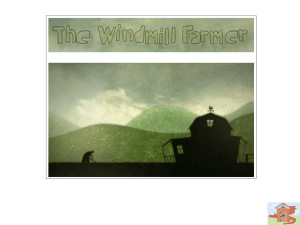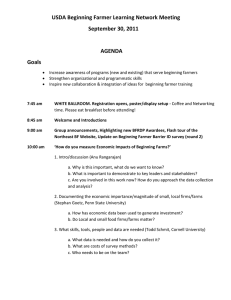Ec721 PROBLEM SET 2
advertisement
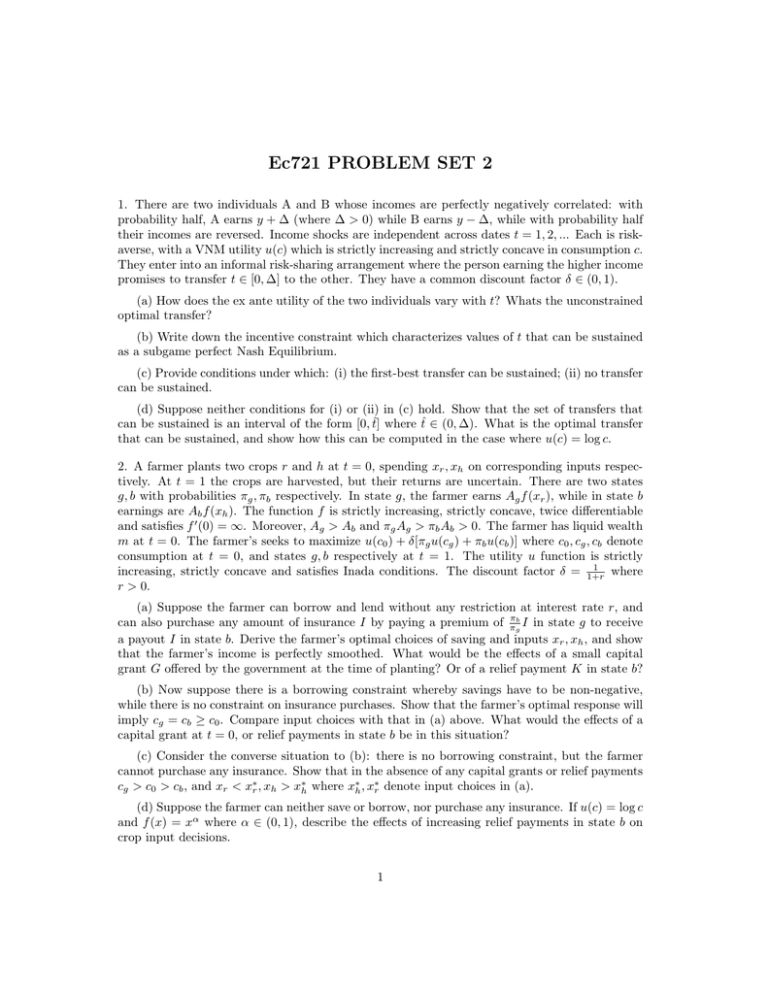
Ec721 PROBLEM SET 2 1. There are two individuals A and B whose incomes are perfectly negatively correlated: with probability half, A earns y + ∆ (where ∆ > 0) while B earns y − ∆, while with probability half their incomes are reversed. Income shocks are independent across dates t = 1, 2, ... Each is riskaverse, with a VNM utility u(c) which is strictly increasing and strictly concave in consumption c. They enter into an informal risk-sharing arrangement where the person earning the higher income promises to transfer t ∈ [0, ∆] to the other. They have a common discount factor δ ∈ (0, 1). (a) How does the ex ante utility of the two individuals vary with t? Whats the unconstrained optimal transfer? (b) Write down the incentive constraint which characterizes values of t that can be sustained as a subgame perfect Nash Equilibrium. (c) Provide conditions under which: (i) the first-best transfer can be sustained; (ii) no transfer can be sustained. (d) Suppose neither conditions for (i) or (ii) in (c) hold. Show that the set of transfers that can be sustained is an interval of the form [0, t̂] where t̂ ∈ (0, ∆). What is the optimal transfer that can be sustained, and show how this can be computed in the case where u(c) = log c. 2. A farmer plants two crops r and h at t = 0, spending xr , xh on corresponding inputs respectively. At t = 1 the crops are harvested, but their returns are uncertain. There are two states g, b with probabilities πg , πb respectively. In state g, the farmer earns Ag f (xr ), while in state b earnings are Ab f (xh ). The function f is strictly increasing, strictly concave, twice differentiable and satisfies f 0 (0) = ∞. Moreover, Ag > Ab and πg Ag > πb Ab > 0. The farmer has liquid wealth m at t = 0. The farmer’s seeks to maximize u(c0 ) + δ[πg u(cg ) + πb u(cb )] where c0 , cg , cb denote consumption at t = 0, and states g, b respectively at t = 1. The utility u function is strictly 1 where increasing, strictly concave and satisfies Inada conditions. The discount factor δ = 1+r r > 0. (a) Suppose the farmer can borrow and lend without any restriction at interest rate r, and can also purchase any amount of insurance I by paying a premium of ππgb I in state g to receive a payout I in state b. Derive the farmer’s optimal choices of saving and inputs xr , xh , and show that the farmer’s income is perfectly smoothed. What would be the effects of a small capital grant G offered by the government at the time of planting? Or of a relief payment K in state b? (b) Now suppose there is a borrowing constraint whereby savings have to be non-negative, while there is no constraint on insurance purchases. Show that the farmer’s optimal response will imply cg = cb ≥ c0 . Compare input choices with that in (a) above. What would the effects of a capital grant at t = 0, or relief payments in state b be in this situation? (c) Consider the converse situation to (b): there is no borrowing constraint, but the farmer cannot purchase any insurance. Show that in the absence of any capital grants or relief payments cg > c0 > cb , and xr < x∗r , xh > x∗h where x∗h , x∗r denote input choices in (a). (d) Suppose the farmer can neither save or borrow, nor purchase any insurance. If u(c) = log c and f (x) = xα where α ∈ (0, 1), describe the effects of increasing relief payments in state b on crop input decisions. 1

